
Unusual improvisational forms from the quartet of saxophonist Paul Hartsaw, guitarist Kristian Aspelin, bassist Damon Smith and percussionist Jerome Byrerton, recording in Oakland, CA in 2006.
In Stock
Quantity in Basket: None
Log In to use our Wish List
Shipping Weight: 5.00 units
EU & UK Customers:
Discogs.com can handle your VAT payments
So please order through Discogs
Sample The Album:
Paul Hartshaw-soprano saxophone, tenor saxophone
Kristian Aspelin-guitar, broom
Damon Smith-doublebasses
Jerome Bryerton-percussion
Click an artist name above to see in-stock items for that artist.
UPC: 820637052124
Label: Balance Point Acoustics
Catalog ID: BPA012
Squidco Product Code: 15125
Format: CD
Condition: New
Released: 2007
Country: USA
Packaging: Jewel Case
Tracks 1-7 were recorded at 1510 8th St. Studios in Oakland, CA on August 25th, 2006 by Scott R. Looney.Track 8 was recorded at the Luggage Store Gallery in San Francisco, CA on August 24th, 2006 by Scott R. Looney.
"So often a dedication can seemed forced, especially between the visual arts and music, like trying to draw a line we all hope is there. In this instance, it happened very spontaneously and it was exciting to be able to connect my two strongest interests this way.
Toward the end of the session, while listening to the earlier takes, I felt like we needed another approach, with more distance from the instruments. I thought of Brice Marden drawing with a long stick cut from a tree to distance himself from the canvas or paper -- and then I saw a shop broom.I immediately thought of Joseph Beuys and his performance/vitrine "Ausfegen," where he swept Karl-Marx-Platz, Berlin in 1972, the year Kristian and I were born. He deposited the contents (see titles) and the broom in a vitrine and a recording of the action plays from a speaker next to it.
For the next piece we recorded, which ended up being track 7, I asked Kristian to play his guitar with the shop broom, and I used two double basses (thanks to Tony Dryer for the second bass), both prepared, laying on their backs, played standing with two bows."-Damon Smith, May 2007
"Recently, in a conversation with Anthony Braxton, I mentioned a new group I'd organized and the way I'd written the music for it. Braxton said, "that sounds like a real new millennium ensemble."Of course Braxton is the master of finding exactly the right words to describe subtle things that exist in new and primarily improvised music. He might say the same thing about the music on this recording. This recording is certainly music of the new millennium, and not just because we have turned the calendar over, but because it is made by a group of focused musicians who function in a small community creating music using a vocabulary of rarefied materials to express themselves in a contemporary way. That vocabulary has developed over the past few decades in a similar way to that of early jazz music, by daring artists working in an underground culture. Different material used in a different "time space reality" (to use another Braxtonism) but which to me functions much like its predecessor. On this recording, "newness" is the goal and the norm. Just like in the old days.Dissonance, dynamics, harmonics, conversational interaction, extended techniques and energy, are, in certain places, the standard material of the day. The early standard material meant playing the blues, or a Tin Pan Alley tune. The jazz player's challenge was in embellishing a standard tune in a strict form with a personal interpretation and the use of a unique set of techniques. The reward for the listener then was in hearing the obvious be transformed into something special and maybe even spectacular or superhuman. The results were a new way to see the world through music. One could say that the music here is more inspired by contemporary classical music than jazz. Maybe. There certainly are things here that suggest that, but improvising musicians have always drawn from every source they feel is relevant with the goal of turning it into something else altogether. I hear a connection to early jazz in this music in the way the players communicate with each other. There is an open exchange of ideas and a sense of playfulness and discovery. The challenge for the musicians making the music on this recording is to use the new vocabulary to create the form instantly and with the same amount of technical control and vitality as in the old days, while never relying on the obvious. The reward for the listener of this music comes from the discovery of the uniqueness of the form rendered in personal technique, and the possibility that the results could suggest a new viewpoint that hasn't existed before.When the world catches up, it will find that there are just as many future-seeking musicians now as there ever were. The amount of soul needed to persevere with new ideas and with the goal of suggesting a new viewpoint is the same as it ever was, and is present on this recording."-Joe Morris, May 2007
Artist Biographies
• Show Bio for Damon Smith "Damon Smith studied double bass with Lisle Ellis and has had lessons with Bertram Turezky, Joëlle Leandré, John Lindberg, Mark Dresser and others. Damon's explorations into the sonic palette of the double bass have resulted in a personal, flexible improvisational language based in the American jazz avant-garde movement and European non-idiomatic free improvisation. Visual art, film and dance heavily influence his music, as evidenced by his CAMH performance of Ben Patterson's Variations for Double Bass, collaborations with director Werner Herzog on soundtracks for Grizzly Man and Encounters at the End of the World, and an early performance with the Merce Cunningham Dance Company. Damon has collaborated with a wide range of musicians, including: Cecil Taylor, Marshall Allen (of Sun Ra's Arkestra), Henry Kaiser, Roscoe Mitchell, Michael Pisaro, Wadada Leo Smith, Marco Eneidi, Wolfgang Fuchs, Peter Brötzmann and Peter Kowald. After many years in the San Francisco Bay Area, and five great years in Houston, Texas working regularly with Alvin Fielder, Sandy Ewen, David Dove & Chris Cogburn, Damon will move to the Boston area in the fall of 2016. Damon has run Balance Point Acoustics record label since 2001, releasing music focusing on transatlantic collaborations between US and European musicians." ^ Hide Bio for Damon Smith • Show Bio for Jerome Bryerton "Jerome Bryerton's artistic expression evolved from years of playing drums in rock, jazz and experimental groups. Performing solo or collaboratively, he's toured and recorded internationally with many notable improvisers. Jerome is also part owner of a large industrial silk screening operation in Chicago. While some may perceive a factory to be the antithesis to the creative process, Jerome's imagination has been known to incorporate the errors of assembly line production into some of his art. Rejected test prints often made their way into many of his early canvases. Strictly working within the medium of oil on canvas and applied with plexiglass. Jerome's dense, moody abstractions and marbleized colors have been said to evoke controlled chaos, blurred memory and decay. His influences range from Masters such as Gerhard Richter, Anselm Kiefer, Luc Tuymans and Cy Twombly. Self-taught and skilled in improvisation, Jerome believes that everything starts with curiosity: if you're curious about something and you're willing to learn more about it, everything happens by itself." ^ Hide Bio for Jerome Bryerton
11/20/2024
Have a better biography or biography source? Please Contact Us so that we can update this biography.
11/20/2024
Have a better biography or biography source? Please Contact Us so that we can update this biography.
Track Listing:
1. Vitrine 6:47
2. Sand 2:52
3. Copper 3:56
4. Garbage 2:36
5. Stone 8:17
6. Paper 3:20
7. Broom With Red Bristels 10:04
8. Pamphlet Printed On Plastic Bag 14:24
Improvised Music
Free Improvisation
West Coast/Pacific US Jazz
Quartet Recordings
Search for other titles on the label:
Balance Point Acoustics.






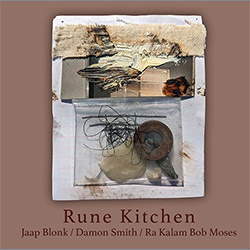


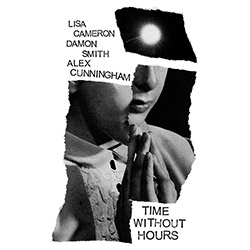
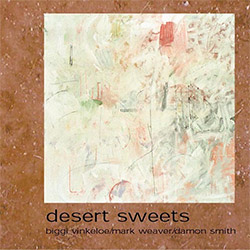
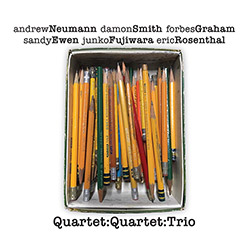

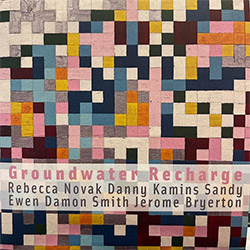
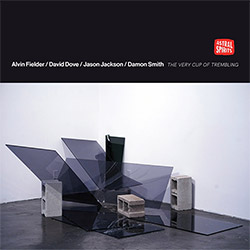
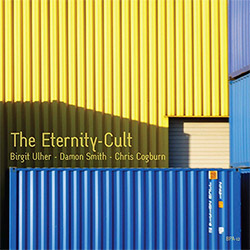
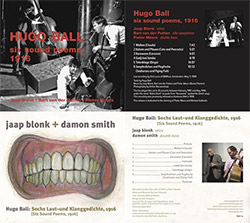

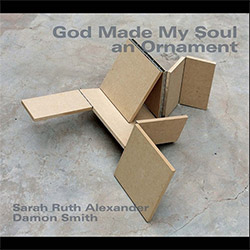

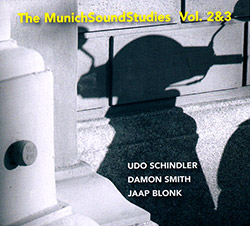

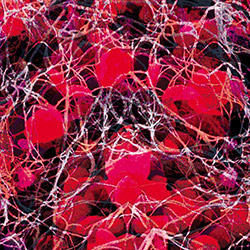

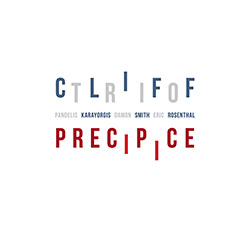

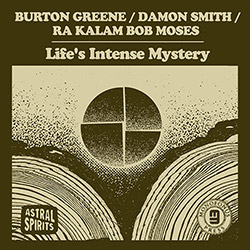


![Guy, Barry / Ken Vandermark: Occasional Poems [2 CDs]](https://www.teuthida.com/productImages/misc4/34849.jpg)
![Novoa / Carter / Mela Trio: Vol.1 [VINYL]](https://www.teuthida.com/productImages/misc4/35236.jpg)


![Elephant9 : Mythical River [VINYL]](https://www.teuthida.com/productImages/misc4/34624.jpg)
![Evans, Peter (Evans / Eldh / Black): Extra [VINYL]](https://www.teuthida.com/productImages/misc4/35279.jpg)

![McPhee, Joe: Straight Up, Without Wings [BOOK]](https://www.teuthida.com/productImages/misc4/35454.jpg)
![Jeck, Philip: rpm [2 CDs]](https://www.teuthida.com/productImages/misc4/35455.jpg)













![Barker / Parker / Irabagon: Bakunawa [VINYL]](https://www.teuthida.com/productImages/misc4/35533.jpg)
![Blaser, Samuel / Marc Ducret / Peter Bruun: Dark Was The Night, Cold Was The Ground [VINYL 10-inch]](https://www.teuthida.com/productImages/misc4/35492.jpg)








![Warren, Kenny (Warren / Hoffman / Ellman): Sweet World [VINYL]](https://www.teuthida.com/productImages/misc4/35451.jpg)




![Blake, Ran / Dave Knife Fabris: Live Amsterdam 2006, First Visit [CD + POSTCARDS]](https://www.teuthida.com/productImages/misc4/35275.jpg)













![DNS: Taking Big Bites Of The Khandas Three Cafes Deep [2 CDs]](https://www.teuthida.com/productImages/misc4/35334.jpg)




![Cleaver, Gerald: The Process [VINYL]](https://www.teuthida.com/productImages/misc4/34966.jpg)




![Alva Noto: HYbr:ID II [VINYL 2 LPs]](https://www.teuthida.com/productImages/misc4/35201.jpg)

![Baron, Derek / Luke Martin: Distinct and Concealed [CASSETTE + DOWNLOAD]](https://www.teuthida.com/productImages/misc4/35079.jpg)

![Lyle, Erica Dawn : Colonial Motels [CASSETTE + DOWNLOAD]](https://www.teuthida.com/productImages/misc4/35080.jpg)









![Sanna, Claudio: Compositori Sardi Contemporanei II [2 CDs]](https://www.teuthida.com/productImages/misc4/35317.jpg)







![Zurria, Manuel: Fame di Vento [3 CDs]](https://www.teuthida.com/productImages/misc4/35167.jpg)

![Granberg, Magnus / Nattens Inbrott / Skogen: Holde Traume, Kehret Wieder! [2 CDs]](https://www.teuthida.com/productImages/misc4/35038.jpg)
![Frey, Jurg: Outermost Melodie [2 CDs]](https://www.teuthida.com/productImages/misc4/35039.jpg)

![Pavone, Jessica: Reverse Bloom [VINYL]](https://www.teuthida.com/productImages/misc4/34895.jpg)




![Modney (Modney / Wooley / Gentile / Roberts / Pluta / Symthe / ...): Ascending Primes [2 CDs]](https://www.teuthida.com/productImages/misc4/34852.jpg)









![Elephant9 with Terje Rypdal: Catching Fire [VINYL 2 LPs]](https://www.teuthida.com/productImages/misc4/35355.jpg)
![Deerlady (Obomsawin, Mali / Magdalena Abrego): Greatest Hits [VINYL]](https://www.teuthida.com/productImages/misc4/34876.jpg)




![Haino, Keiji: Black Blues [2 CDs]](https://www.teuthida.com/productImages/misc4/35109.jpg)



![Surplus 1980: Illusion of Consistency [CD]](https://www.teuthida.com/productImages/misc4/35069.jpg)
![Staiano, Moe: Away Towards the Light [VINYL + DOWNLOAD]](https://www.teuthida.com/productImages/misc4/35037.jpg)



![Caveira (Gomes / Sousa / Abras / Ferrandini): Ficar Vivo [VINYL]](https://www.teuthida.com/productImages/misc4/34643.jpg)
![Gregg, J. J. / David Van Auken: Lunar Prairie [CD w/ DOWNLOAD]](https://www.teuthida.com/productImages/misc4/34611.jpg)

![Coultrain: Mundus [VINYL]](https://www.teuthida.com/productImages/misc4/32439.jpg)
![Mattin: Songbook #6 [VINYL]](https://www.teuthida.com/productImages/misc4/27317.jpg)
![Punkappella: Wake Up [7-inch VINYL]](https://www.teuthida.com/productImages/misc4/17519.jpg)
![Residents, The: WARNING: UNiNC.: Live And Experimental Recordings 1971-1972 [VINYL 2 LPs]](https://www.teuthida.com/productImages/misc4/31521.jpg)
![Coultrain: Phantasmagoria [VINYL]](https://www.teuthida.com/productImages/misc4/30142.jpg)
![Lennon, Sean Ono: Asterisms [VINYL]](https://www.teuthida.com/productImages/misc4/34517.jpg)

![Coley, Byron: Dating Tips for Touring Bands [VINYL]](https://www.teuthida.com/productImages/misc4/17906.jpg)

![Lost Kisses: My Life is Sad & Funny [DVD]](https://www.teuthida.com/productImages/misc4/lostKissesDVD.jpg)